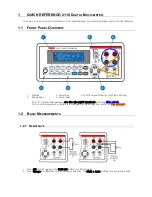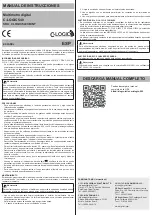
166119
8/31/2006
24
Table 7
1
-6-
-16-
2
2
-48-
8
7
-128-
2
3
4
5
6
7
8
9
10
11
12
13
14
15
16
hs
hf
ls
lf
1
6
-12-
16
32
16/2
8
16
6
-3-
5
32
64/4
2
3
4
5
6
7
8
9
10
11
12
13
14
15
16
hs
hf
ls
lf
fail
0
236
2
LINK A:
total user timeslots
remaining free timeslots
LINK B:
total user timeslots
remaining free timeslots
-8-
16
32
16/2
8
16
-4-
-3-
5
24
64/4
8/2
16
32
16/2
8
24
4
3
5
64/4
-12-
24
18
24/18
12
6
12
12
72/18
-16-
2
2
-48-
8
7
-96-
-24-
12
12
-96-
24
12
In the final step, once the “hs” channels have been dealt with, the system looks for low-
priority channels seeking backup. There is only one in this case, channel 1. Low-priority
channels cannot bump any channel in the process of switching to a backup link, but
fortunately, there are 8 timeslots available. So, channel 1 is reallocated to Link B, with just 2
timeslots remaining.
Fixed channels on Link A, whether high or low priority, are out-of-service until such time as
Link A returns to service and these channels have met their restoral timer period.
2.3.4.2 Example: Link B Failure
The following tables detail sequentially what happens when Link B fails.
Table 8
1
-5-
16
18
-2-
2
48
8
7
128
2
3
4
5
6
7
8
9
10
11
12
13
14
15
16
hs
hf
ls
lf
1
8/2
-18-
16/2
8
4
3
5
64
2
3
4
5
6
7
8
9
10
11
12
13
14
15
16
hs
hf
ls
lf
316
16
fail
0
LINK A:
total user timeslots
remaining free timeslots
LINK B:
total user timeslots
remaining free timeslots
12/6
24/18
12
6
12
12
72/18
6
24
12
12
96/24
24
12
96/24
In the first step, channel 4 is found to be the first high-priority channel seeking backup on Link
A. The number of free timeslots initially is 34, so the channel is reallocated onto Link B
(shaded box), now leaving 16 timeslots unused.
Summary of Contents for Nx8- Dual Composite MUX High-Speed 16-Port TDM...
Page 2: ......
Page 6: ...166119 8 31 2006 2...
Page 32: ...166119 8 31 2006 28...
Page 38: ...166119 8 31 2006 34...
Page 61: ...166119 8 31 2006 57...
Page 62: ...166119 8 31 2006 58...
















































